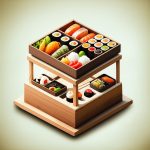Got ants? Knowing the difference between carpenter ants and black ants is key to effective control. This guide helps you identify, treat, and prevent infestations.
Ant Identification: Spot the Difference
Is it a nuisance or a homewrecker? Distinguishing between carpenter ants and black ants is the first step to tackling the problem. Here’s a quick guide:
| Feature | Carpenter Ant | Black Ant |
|---|---|---|
| Size | 1/2″ – 1″ (Large) | < 1/4″ (Small) |
| Color | Black, Reddish-Brown, or Black & Orange | Typically Black or Dark Brown |
| Shape | Smooth, rounded thorax, pinched waist | Uneven thorax, might see a tiny stinger |
| Waist (Nodes) | One | Two |
| Habitat | Moist, decaying wood; inside walls | Nests outdoors, forages indoors |
| Behavior | Excavates wood, leaving frass | Forages for sweets, trails |
| Threat Level | Structural damage | Nuisance |
Carpenter Ants: Decoding the Silent Destroyers
Carpenter ants are relatively large (1/2″ to 1″), and can be black, reddish-brown, or black and orange. Their smooth, rounded thorax and single-node waist are key identifiers. They excavate wood to create nests, leaving behind frass (sawdust-like material). This tunneling, though they don’t eat wood, can weaken structures over time. Moist, decaying wood is their preferred nesting site. Seeing frass near baseboards or window frames strongly suggests a carpenter ant presence.
Black Ants: Understanding the Sugar Seekers
Black ants are smaller (< 1/4″), typically black or dark brown, with an uneven thorax and a two-node waist. They nest outdoors, entering homes in search of sweets and other food. While a nuisance, they don’t pose a structural threat. Spotting trails leading to food sources likely indicates black ants.
Step-by-Step Ant ID
- Location: Where did you see the ant? Near food? Damp wood?
- Size: Large (1/2″+) or small (< 1/4″)?
- Color: Black? Reddish? Other? (Remember, color can be misleading).
- Body: Smooth, rounded thorax and one-node waist (carpenter ant)? Uneven thorax and two-node waist (black ant)?
- Frass: Any sawdust-like material nearby? This is a key sign of carpenter ants.
Treatment Strategies: Tailored Approaches
Carpenter Ants: Due to potential structural damage, professional pest control is often recommended. For minor infestations, targeted insecticide baits designed for carpenter ants might be sufficient. Some experts suggest focusing on eliminating moisture sources, as this can deter nesting.
Black Ants: Disrupting trails with vinegar or soapy water can help. Natural deterrents like diatomaceous earth near entry points can be effective. Sweet ant baits are another option. For persistent infestations, professional pest control offers stronger solutions.
Prevention is Key: Stopping Ants Before They Start
- Seal Entry Points: Caulk cracks and crevices around windows, doors, and pipes.
- Food Storage: Store food in airtight containers and clean up spills promptly.
- Moisture Control: Fix leaks and ensure proper ventilation to reduce moisture, making your home less attractive to carpenter ants.
- Outdoor Cleanliness: Keep garbage cans sealed, trim vegetation away from the house, and remove woodpiles or debris near the foundation. This reduces potential nesting sites for both types of ants.
Need More Help? Resources & Further Reading
For more in-depth information, consult these resources:
- Texas A&M AgriLife Extension Service – Carpenter Ants
- University of California Agriculture & Natural Resources – Ants
- EPA – Protecting Your Home from Pests
This guide empowers you to identify and address ant problems effectively. Remember, accurate identification is the first step to choosing the right treatment and protecting your home.
- Shop Bento Box for Sale To Find Your Ideal Lunch Container - December 6, 2025
- Lunch Box That Fits Bento Box Neatly for Daily Use - December 5, 2025
- Japanese Lunch Bag Does Double Duty as Bento Carrier and Tote - December 4, 2025










